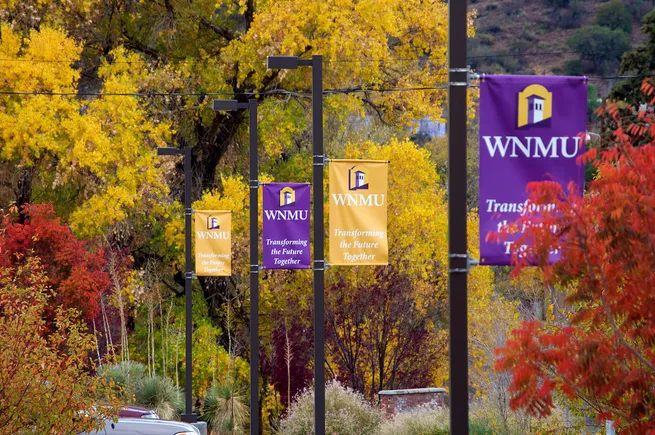Lackawanna College and Peirce College plan to combine under the Lackawanna name, the two Pennsylvania institutions announced Wednesday.
Before finalizing, the combination will require regulatory and accreditor approval, which the colleges expect to come by June 2025. Both colleges are accredited by the Middle States Commission on Higher Education.
In a press release, the colleges said the merger would “solidify Lackawanna’s position as the largest open enrollment private, nonprofit institution” in Pennsylvania.
The Philadelphia-based Peirce caters largely to adult learners, offering associate, bachelor’s and master’s degree programs. Lackawanna, whose main campus is in Scranton, Pa., offers associate and bachelor’s degrees along with continuing education certificates.
In a joint interview, the institutions’ respective leaders framed the consolidation as a way to make both colleges stronger by combining resources and specialties.
“This is a proactive step, a strategic move for both of us,” Jill Murray, Lackawanna’s president, told Higher Ed Dive. “Higher ed is not an easy place right now for many people, and especially in Pennsylvania. That’s not true of us. We’re both in healthy shape.”
Programming played a major role in the decision to combine, officials said.
Mary Ellen Caro, president and CEO of Peirce, noted that her college brings graduate programs to the mix, while Lackawanna has many applied and clinical programs that can complement Peirce’s offerings in the Philadelphia market.
“We both had interesting large partnerships with corporations that could be expanded,” Caro added.
What’s next for the colleges
The Philadelphia-based Peirce will add a new market for Lackawanna. Both colleges focus on their local student bases and job market needs and will continue to do so after they combine, their presidents said.
“We understand the need for serving the populations in which we reside,” Murray said. “We’re not looking to necessarily recruit students from Connecticut. We’re looking to impact the workforce in the regions in which we serve, and that, for many colleges, is difficult to understand.”
Under the agreement, Lackawanna is set to absorb Peirce’s revenue and balance sheet, officials told Higher Ed Dive.
The deal will bring some significant changes to the more than 150-year-old Peirce. Once it’s completed, Peirce’s board will effectively be dissolved. Murray said Lackawanna plans to add some members from Peirce’s board onto its own, though details haven’t been finalized.
Caro will also step down once the institutions combine.
“I will joyfully hand this over to Jill to run, but be there as one of their strongest cheerleaders,” said Caro, who became president and CEO in 2018 and is the first woman to hold the top leadership role at Peirce.
Lackawanna, which is 130 years old, is the larger of the two colleges today, with a headcount of 1,868 students in fall 2022, which was up more than 16% from five years prior. Peirce has seen enrollment plunge over that time by 42% to 856 students.
But both leaders maintained the colleges were in relatively good shape, though Peirce has posted budget deficits in recent years. As a sign of Peirce’s health, Murray pointed to the college’s balance sheet, which as of fiscal 2023 listed more than $22 million in assets available to spend and no long-term debt outside of a property mortgage.
Combining provides opportunities to save money, such as on software tools. Asked about potential staff reductions, Murray said Lackawanna is focused on areas of possible growth with the deal.
“I think there’s going to be some natural attrition over the course of the next year or so, but we’re hopeful that we’re going to be able to keep as much talent and staff as possible,” she added.
‘It’s the relationship that matters’
Lackawanna plans to keep Peirce’s identity and legacy alive by making it a school inside of Lackawanna, according to Murray. Lackawanna also plans to name an online college after Peirce, she added.
With more colleges coming under financial stress — amid demographic shifts, revenue pressure and rising costs — some anticipate a rise in mergers as a potential solution. But timing, communication and collaboration are critical to success, experts say.
Murray and Caro began talking and collaborating before a merger was even on the table. Their collaboration started shortly after the higher ed world began reopening to in-person meetings in the pandemic era, when the two college presidents happened to sit next to each other at a forum.
“We were sharing our respective stories about the market, about our challenges, experiences, opportunities,” Caro said. “It was clear from the beginning that we had great alignment between our missions, being open enrollment institutions at the undergraduate level and having complementary portfolios.”
Their teams first began working together on articulation agreements so that Lackawanna graduates could move on to master’s degrees at Peirce.
“It’s the relationship that matters,” Murray said. “We said, ‘Oh, wow, this could really be something special.’ We get along, we clicked, our teams worked, and we thought, ‘What if?’”





















Discussion about this post